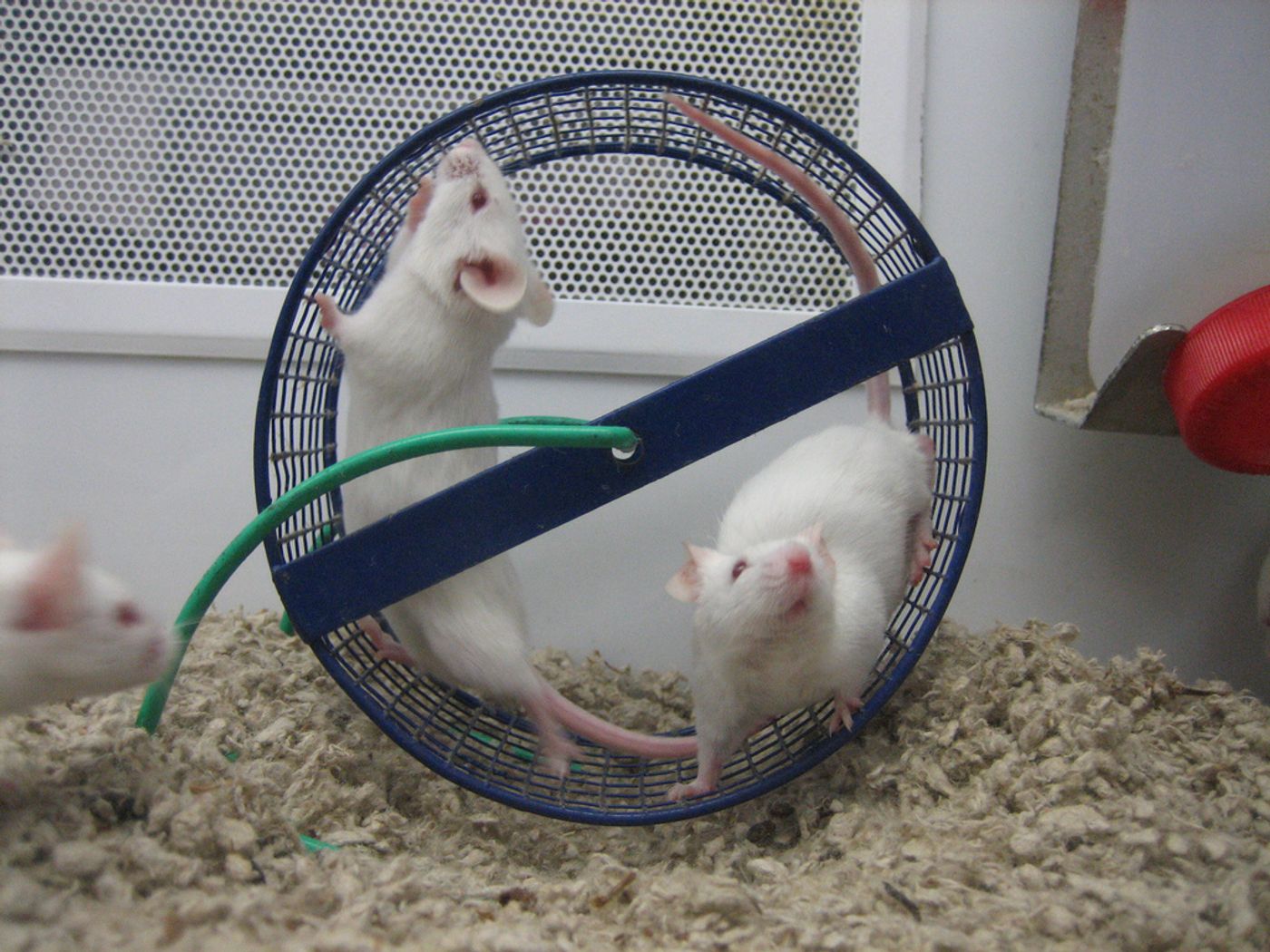Burning More Fat Than Sugar Ups Diabetes Risk in Mice
Exercise is generally seen as good for the body, but new work from researchers at Baylor College of Medicine demonstrated that in mice, when muscles are burning more fat and less glucose, endurance improves but it can lead to diabetes. The muscles of mice rely on carbohydrates - glucose - to fuel body functions when they are awake. When they go to sleep, their bodies switch to fat - lipid - metabolism. The switch between the two modes is controlled by a protein called histone deacetylase 3 (HDAC3). Publishing the findings in Nature Medicine, when the cycle was disrupted, the scientists saw an improvement in exercise endurance, but it also put the mice on the road to diabetes.
"How the muscle uses glucose is regulated by its internal circadian clock that anticipates the level of its activity during the day and at night," said senior author of the work Zheng Sun, an Assistant Professor of Medicine - Diabetes, Endocrinology and Metabolism, and of Molecular and Cellular Biology at Baylor. "The circadian clock works by turning certain genes on and off as the 24-hour cycle progresses. HDAC3 is a key connection between the circadian clock and gene expression. Our previous work showed that HDAC3 helps the liver alternate between producing glucose and producing lipid. In this work, we studied how HDAC3 controls the use of different fuels in skeletal muscle."
In physiology, skeletal muscles are under voluntary control and do most of the work. They also are thus the primary consumers of glucose, making them critical in the maintenance of proper glucose levels. If those muscles become resistant to insulin, they become unable to use glucose, leading to high glucose levels and the probable development of diabetes. To better understand the role of HDAC3 in muscle, the research team utilized a mouse model in which HDAC3 was eliminated from skeletal muscles, and compared how fuel was used there with normal mice.
Under normal food intake conditions in mice, blood sugar rises which leads to insulin release, stimulating muscles to absorb glucose and burn it as fuel. "When the knocked out mice ate, their blood sugar increased and insulin was released just fine, but their muscles refused to take in and use glucose," said Sun. "Lacking HDAC3 made the mice insulin resistant and more prone to develop diabetes." If you want to know more about how insulin resistance causes diabetes, watch the following video.
Interestingly, when mice lacking HDAC3 ran on a treadmill, they had better endurance, "which was intriguing because diabetes is usually associated with poor muscle performance," said Sun. "Glucose is the main fuel of muscle, so if a condition limits the use of glucose, the expectation is low performance in endurance exercises. That's the surprise."
Digging deeper with metabolomics, the scientists learned that HDAC3-deficient mice performed better because their muscles break down more amino acids. This shifts the muscles from preferring glucose to wanting lipids, which enables them to burn lipids with efficiency. That would then explain high endurance observed in the altered mice, since lipids make up a much larger store of energy in the body than glucose does.
These findings suggest that carbo-loading has not in fact been a good strategy for boosting endurance performance. "Carbo-loading didn't make evolutionary sense before the invention of agriculture," said Sun. "Switching muscles from using carbohydrates to lipids could increase exercise endurance, especially for low-intensity exercise." This work could indicate that HDAC inhibitors, a type of drug now in testing for use in disease treatment, may be used as a way to enhance athletic performance through doping.
Genomics studies performed by the team confirmed a link between HDAC3 and the circadian clock. "In normal mice, when the mouse is awake, the clock in the muscle anticipates a feeding cycle and uses HDAC3 to turn off many metabolic genes. This leads the muscles to use more carbohydrate," said Sun. "When the animal is about to go to sleep and anticipates a fasting cycle, the clock removes HDAC3. This leads the muscles to use more lipid."
The researchers suggest that human bodies could be expected to have a similar cycle. The work indicates that body fat burning might be promoted by increasing physical activity when muscles are using lipid, and for most people that is at night. "Losing body fat would be easier by exercising lightly and fasting at night," explained Sun. "It's not a bad idea to take a walk after dinner."
If you would like an overview of how metabolism works in the human body, watch the above video.
Sources: AAAS/Eurekalert via Baylor College of Medicine, Nature Medicine









